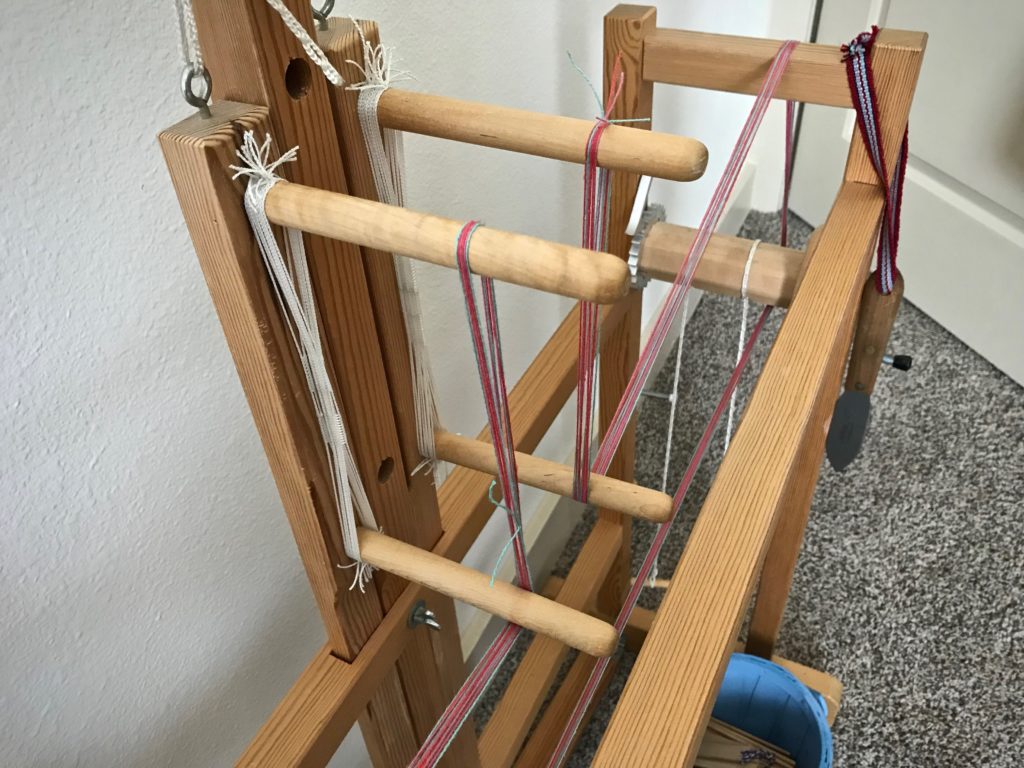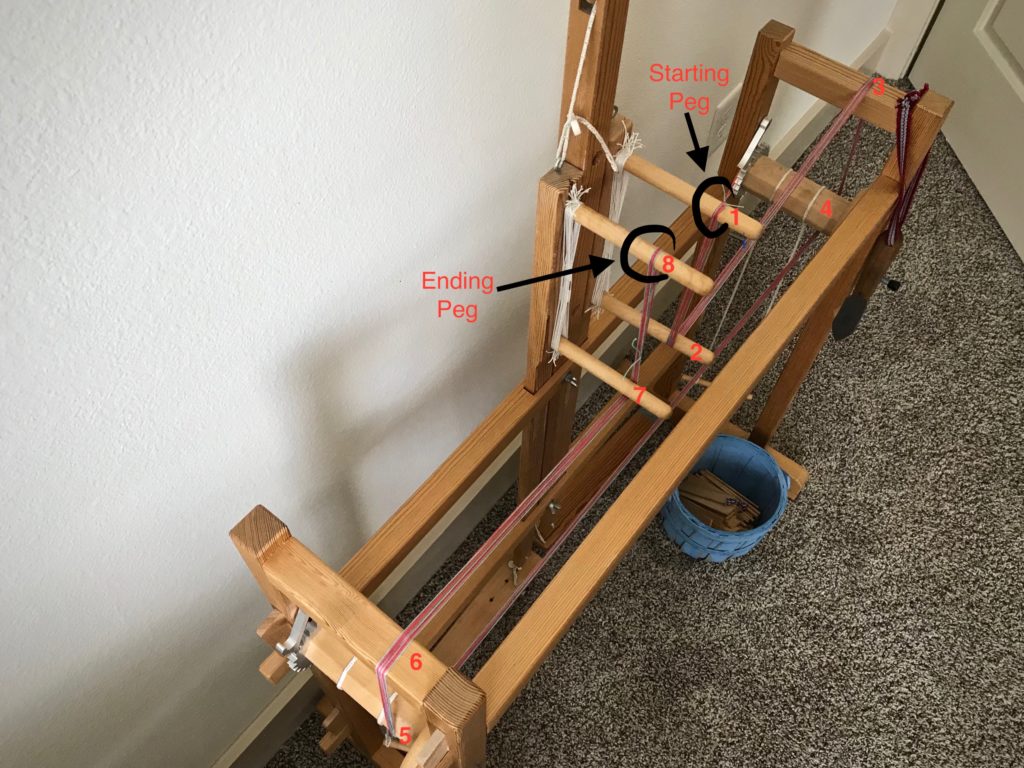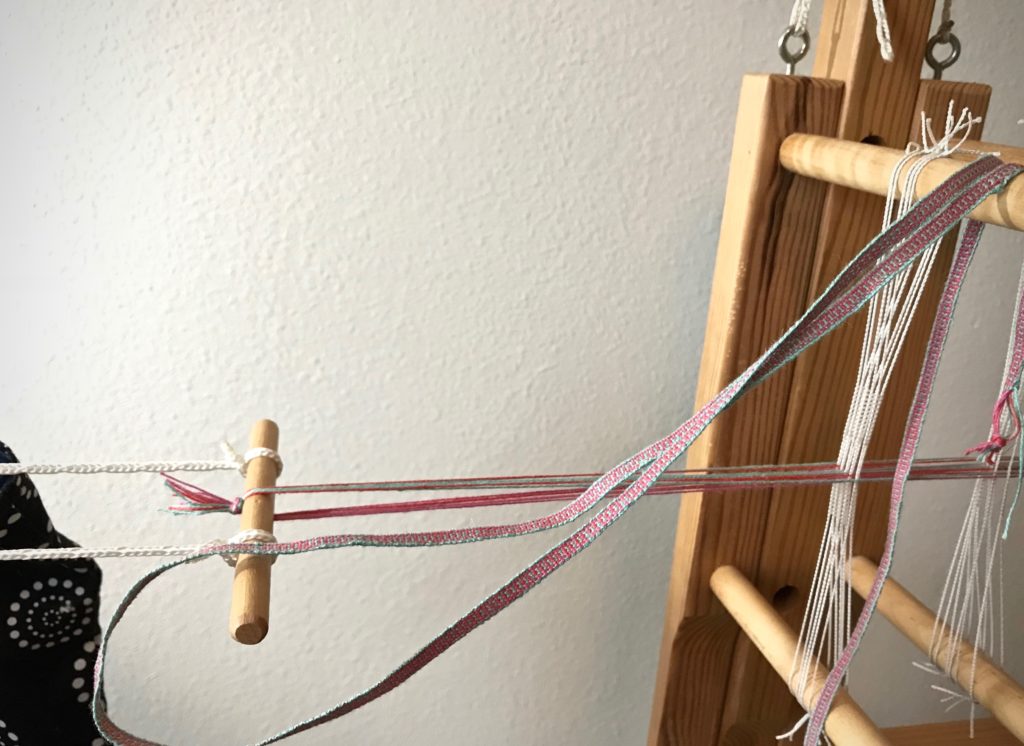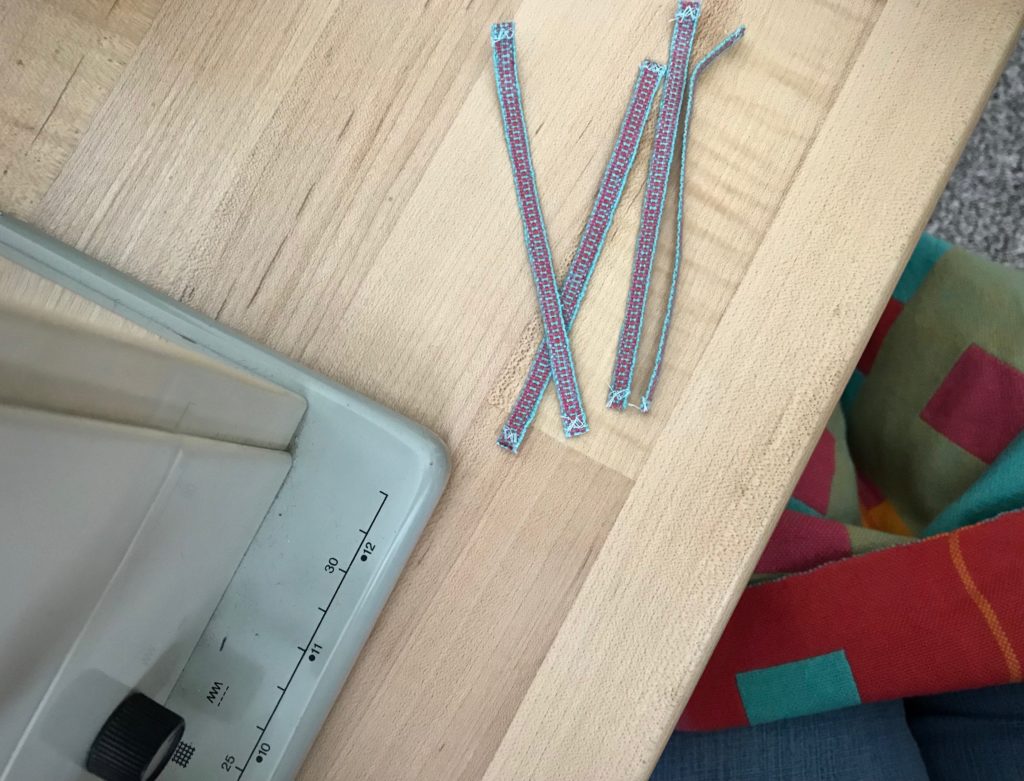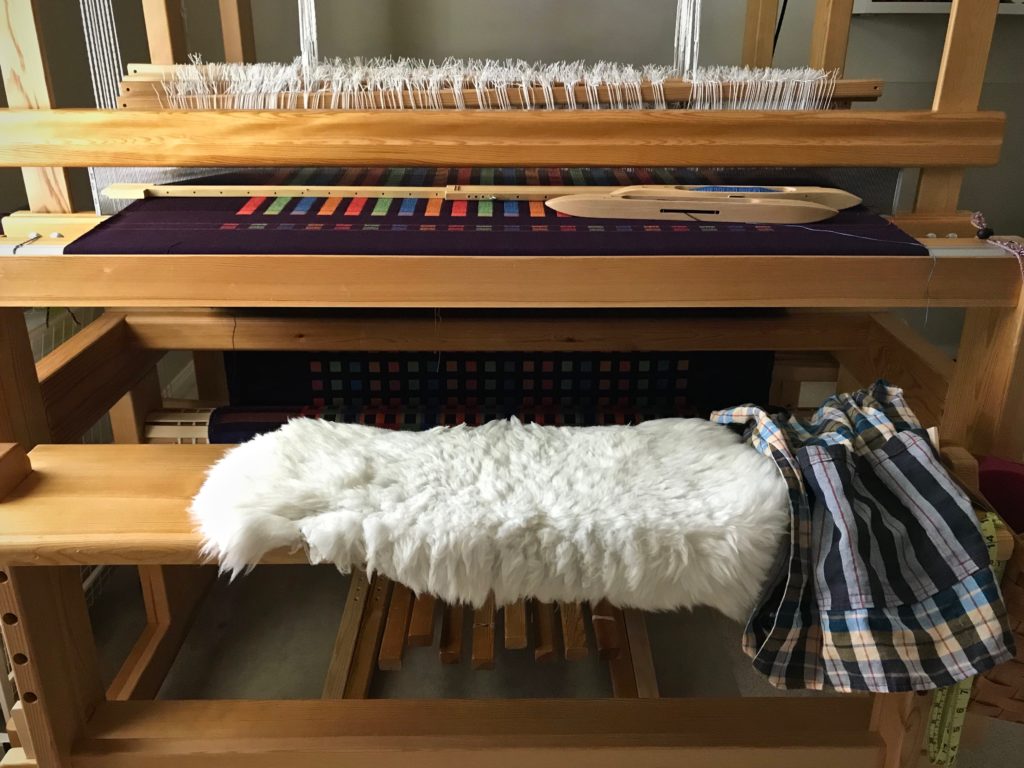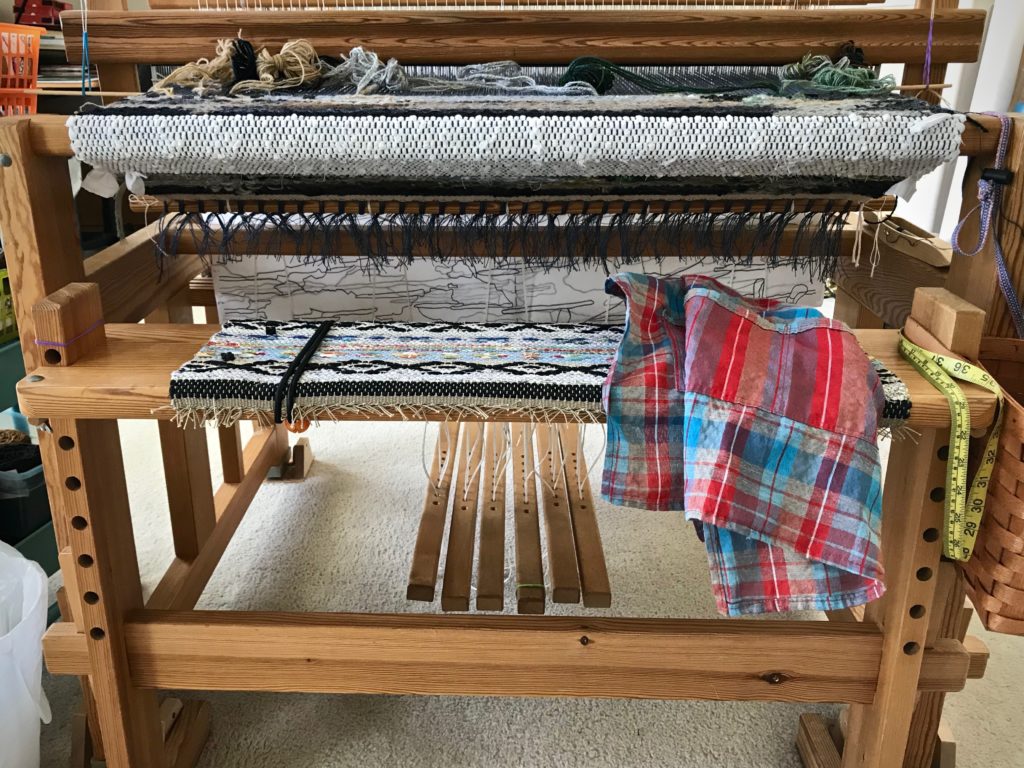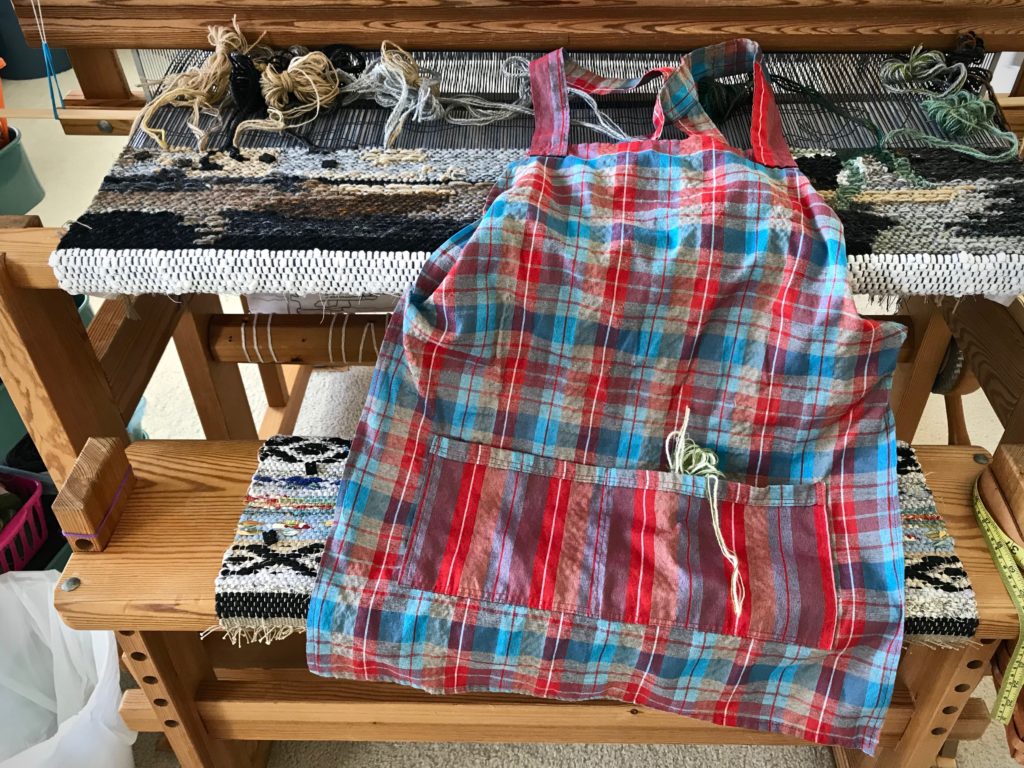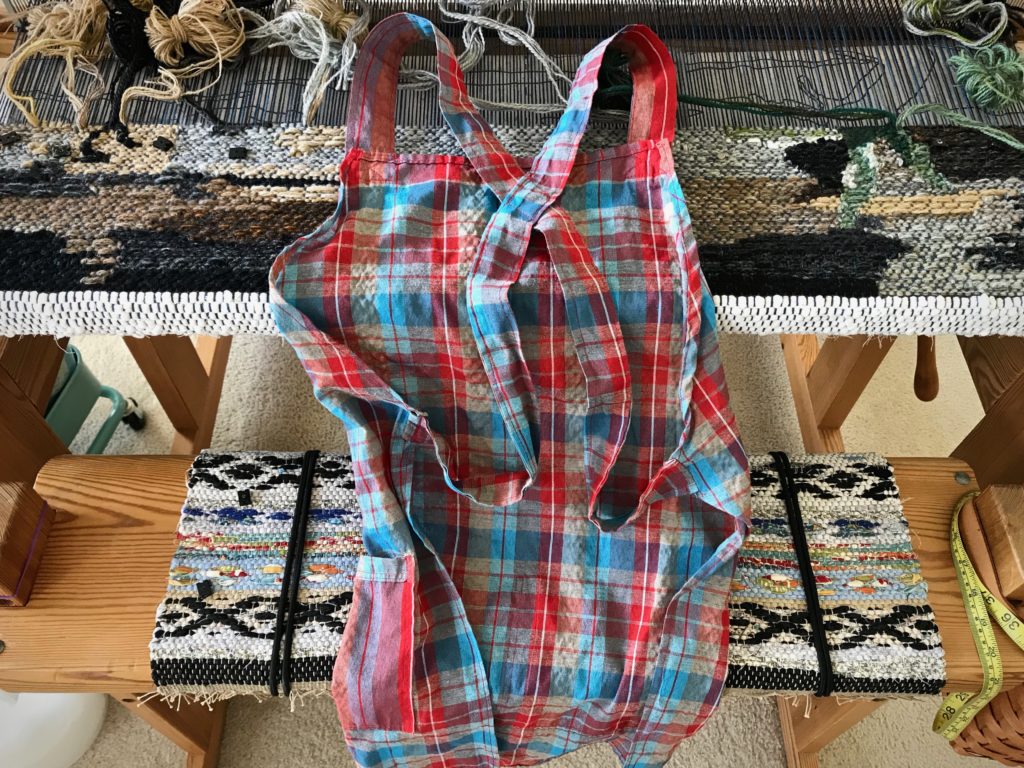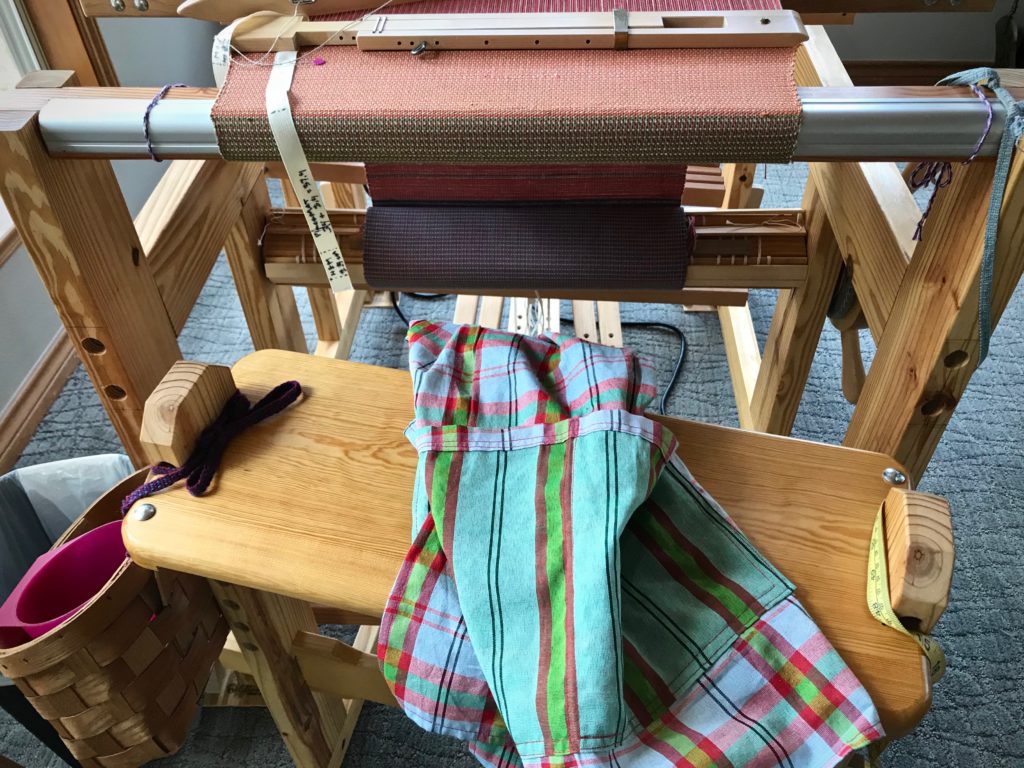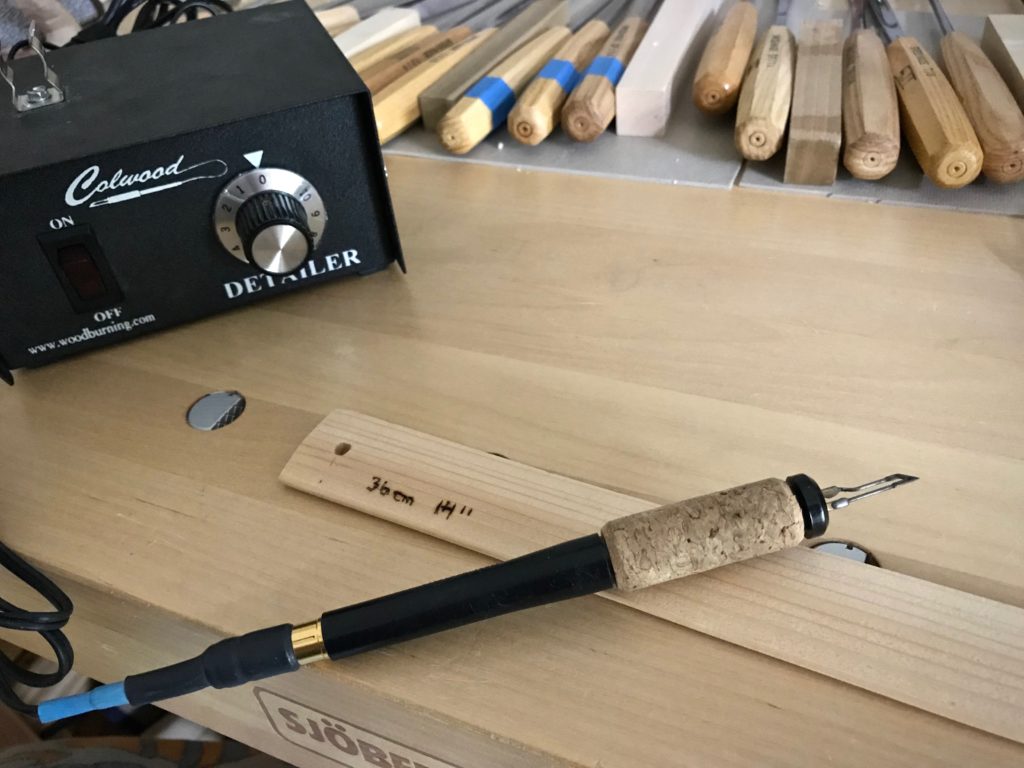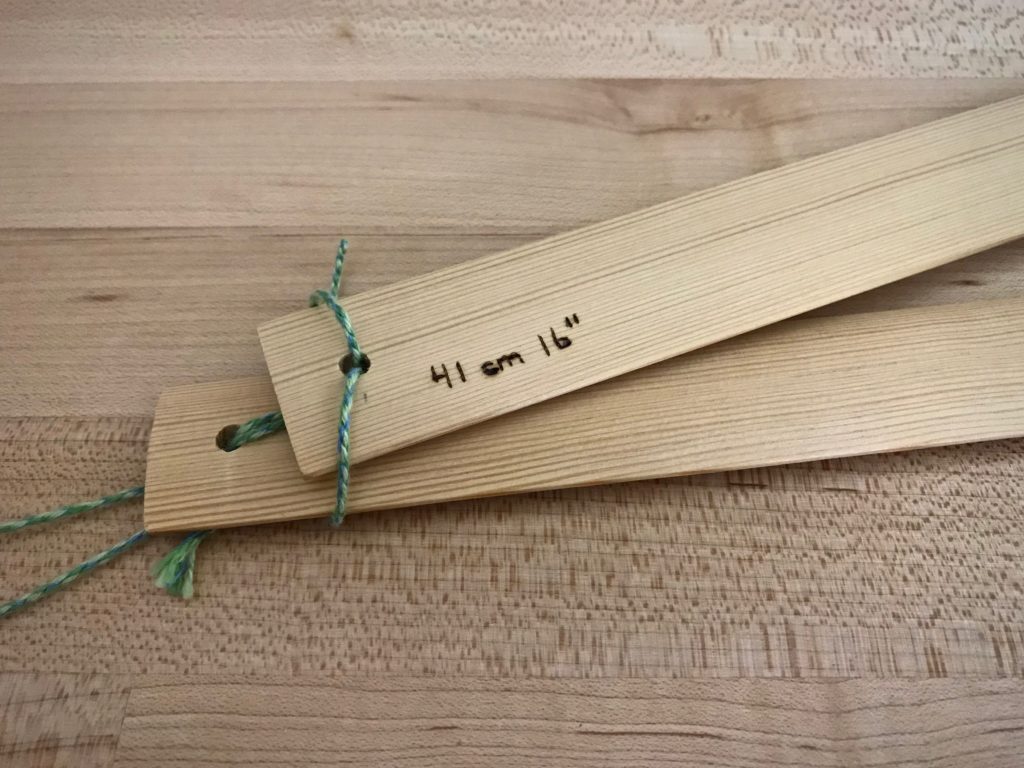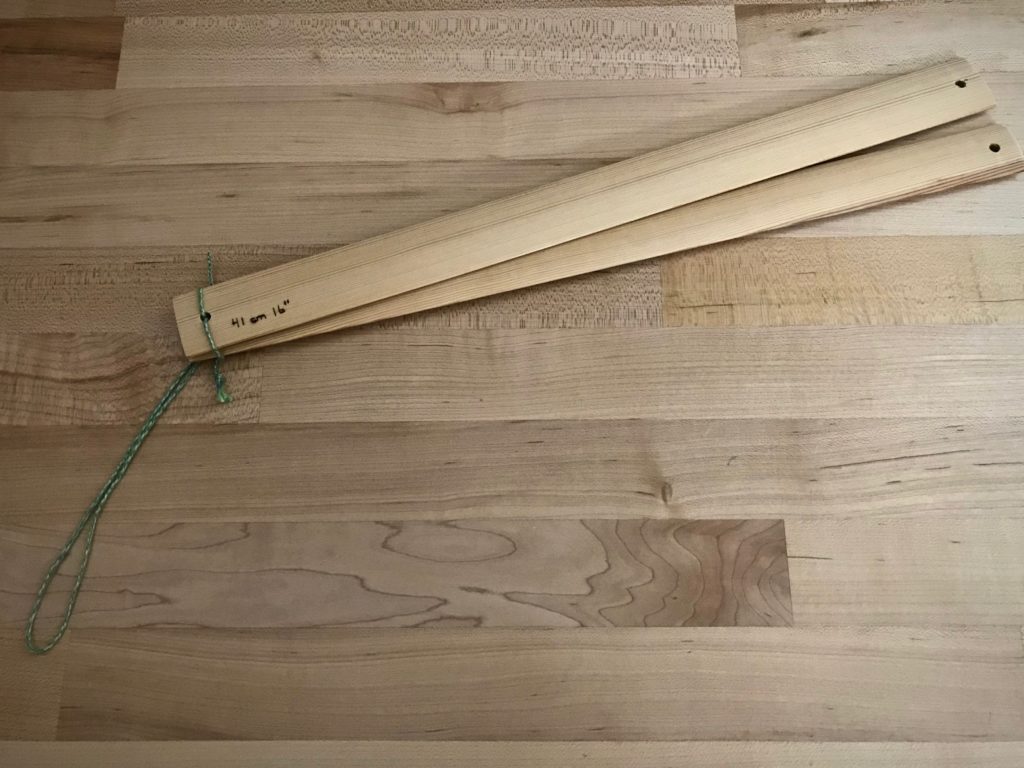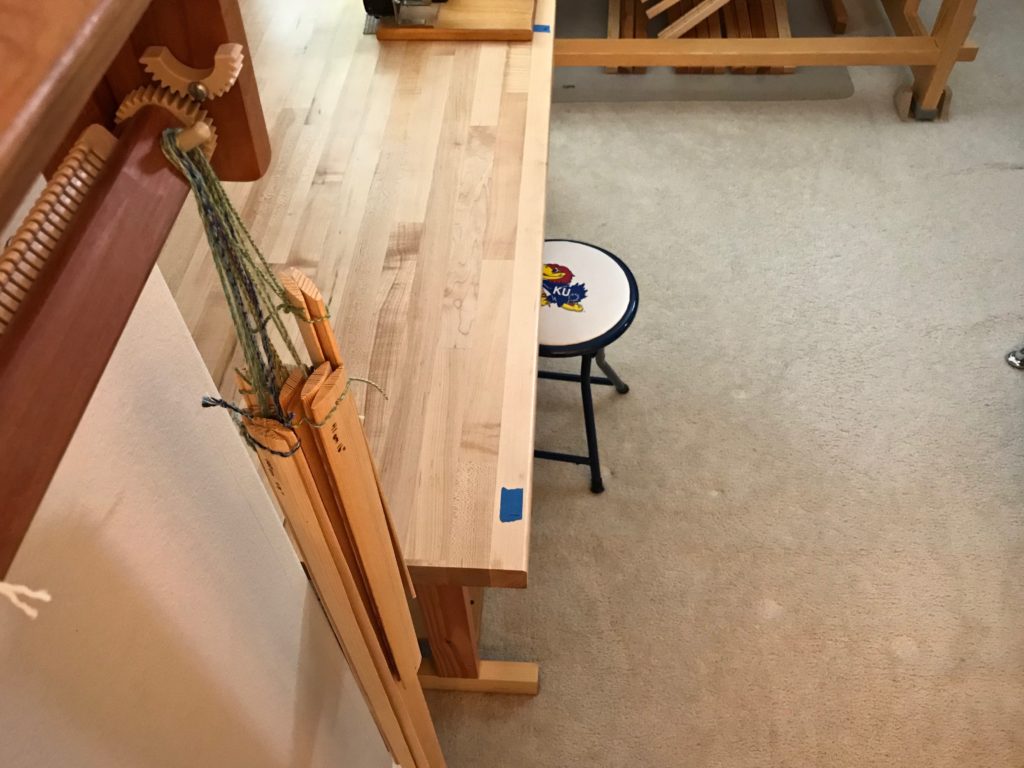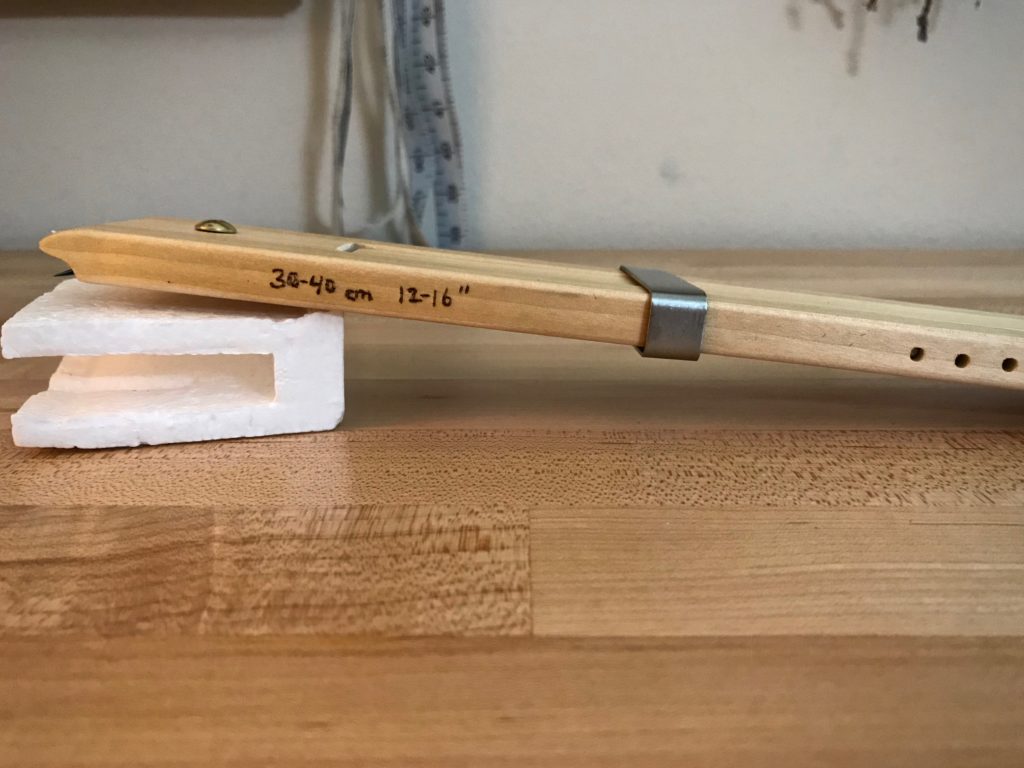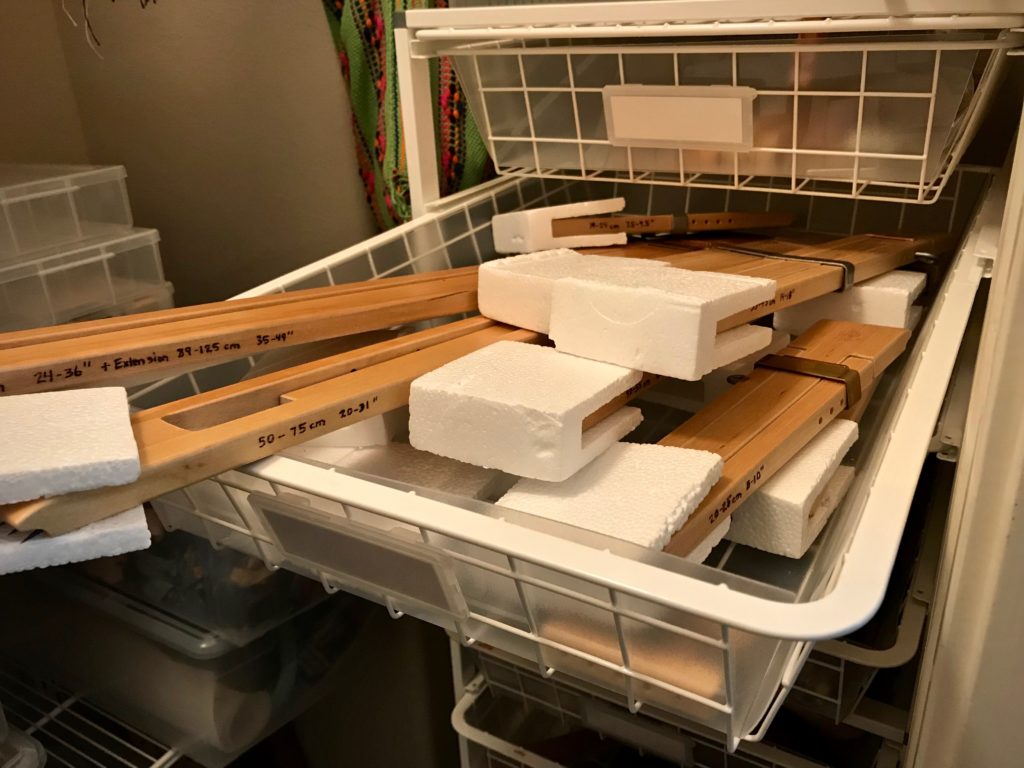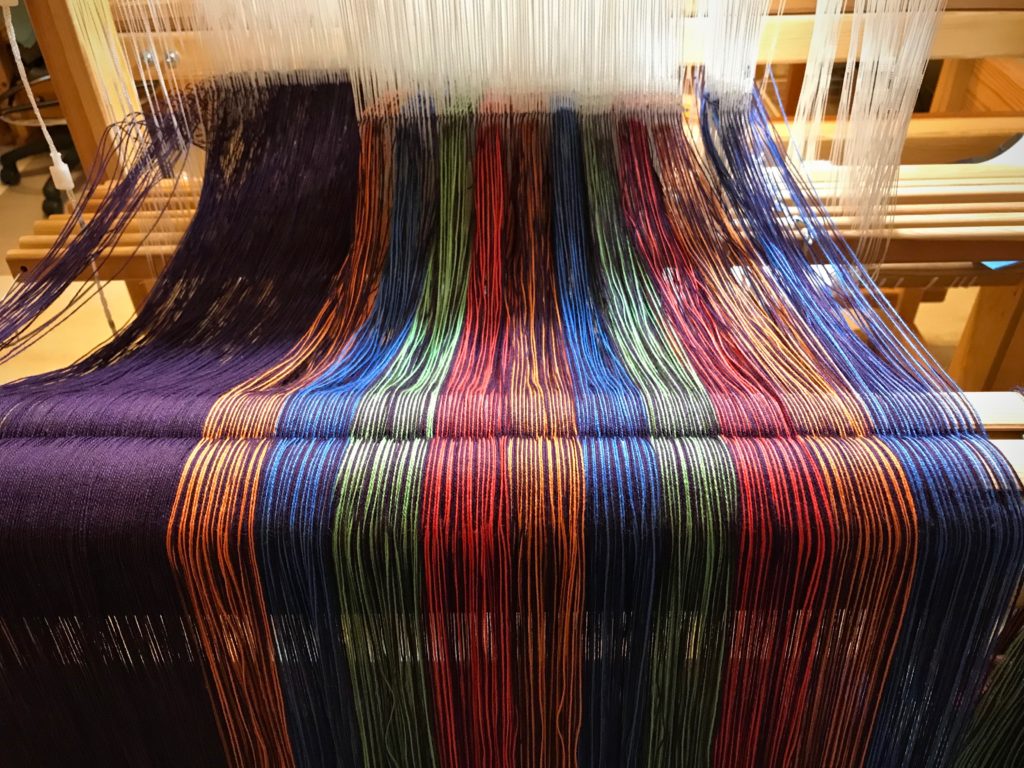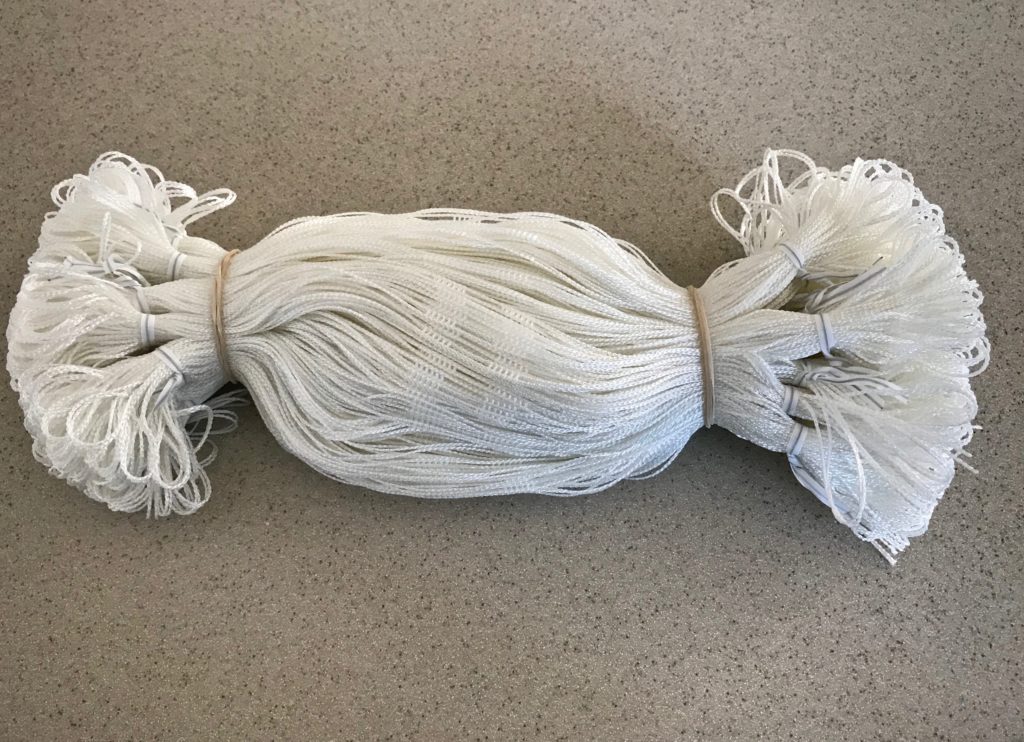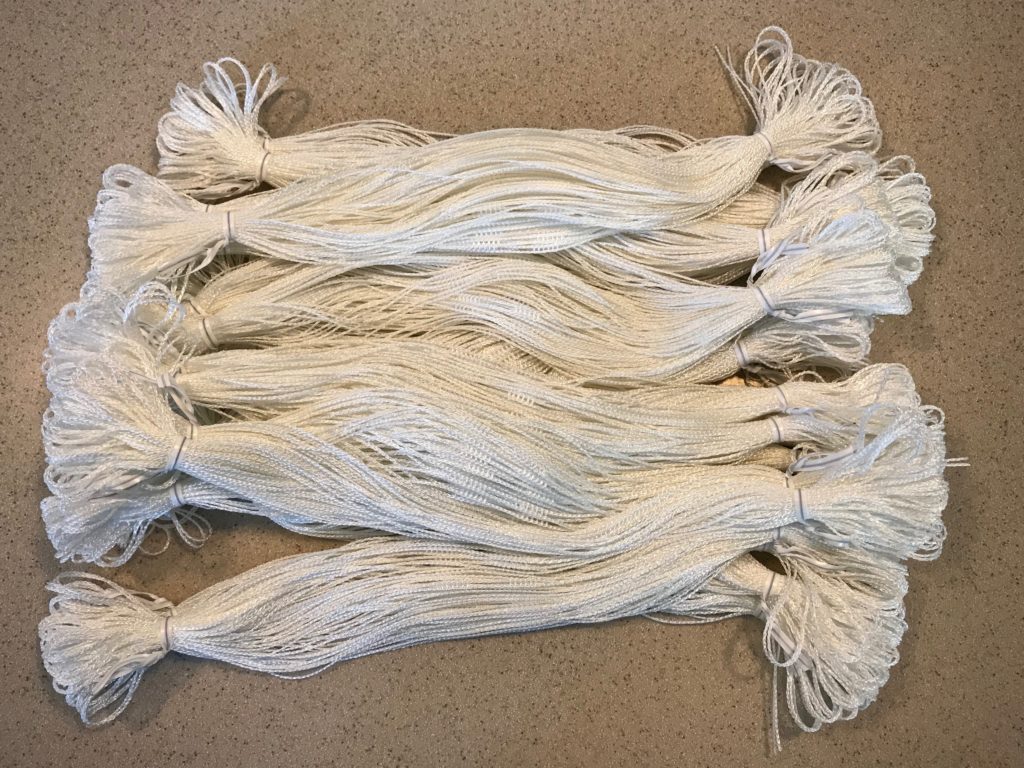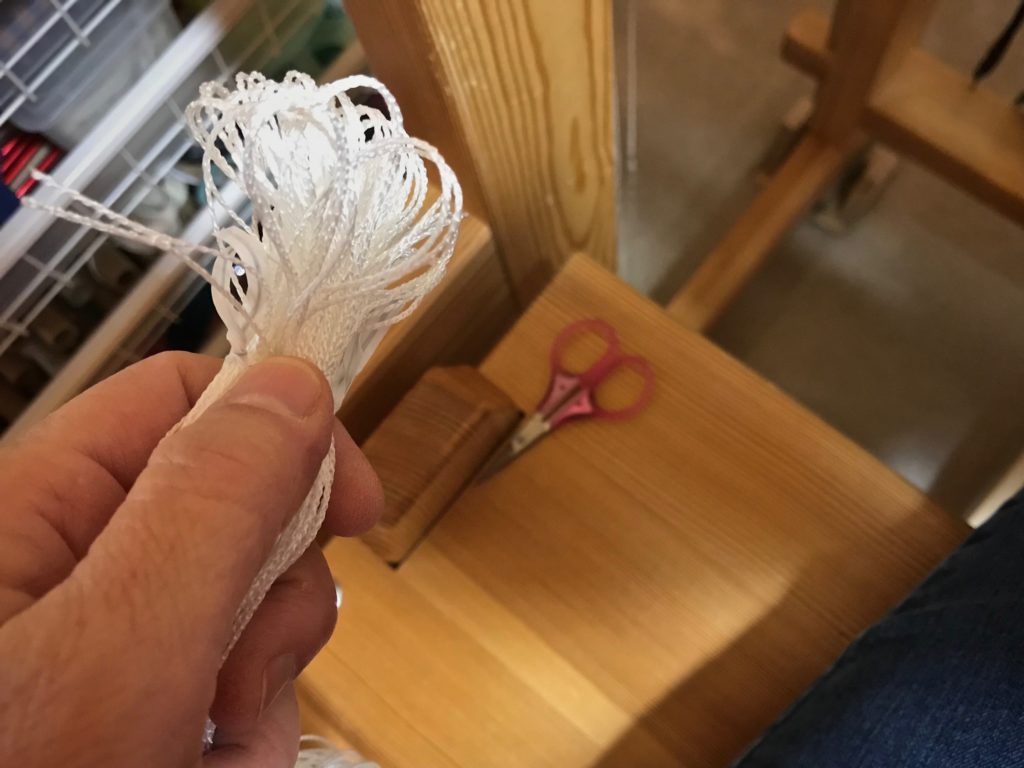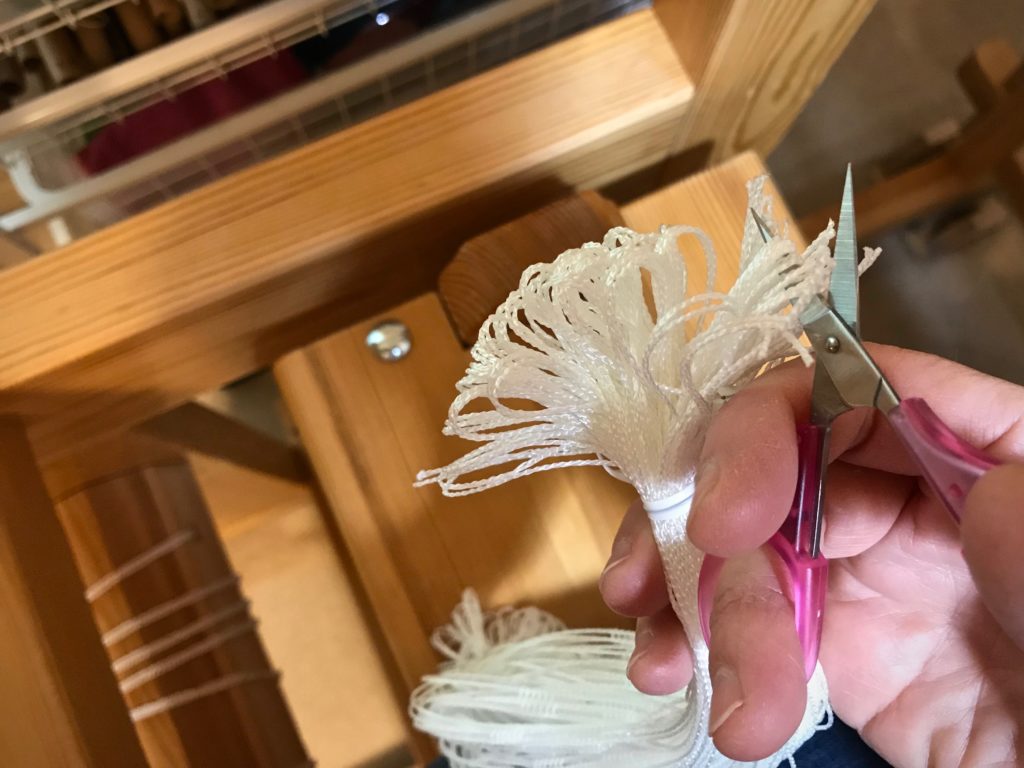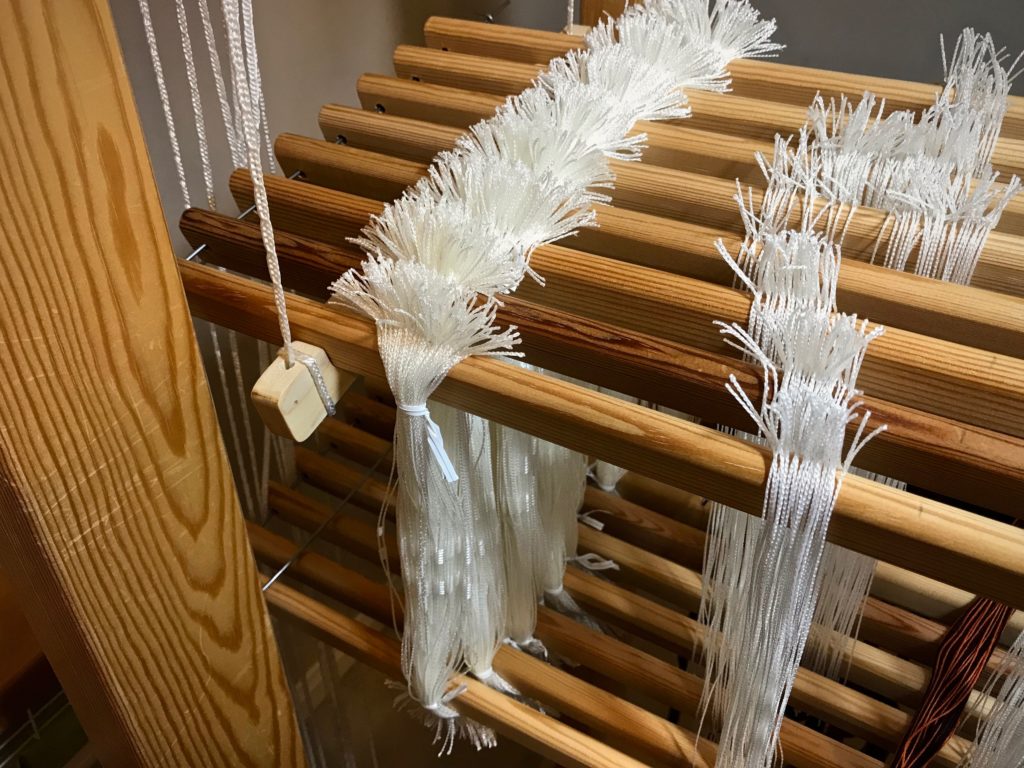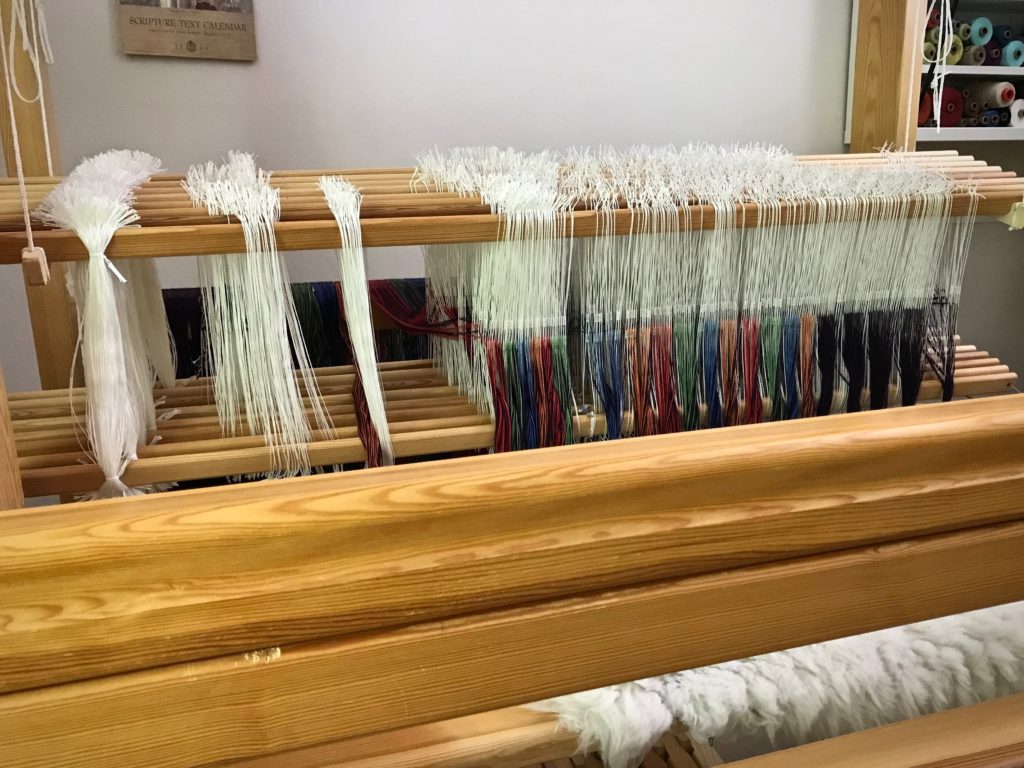Threading four shafts is straightforward because the heddles fit perfectly between four fingers and a thumb. Threading eight shafts is tricky because we don’t have that many fingers! Thankfully, threading eight shafts can be as straightforward as threading four shafts. I like to think of it as four shafts in the back, and four shafts in the front.
For a review of threading four shafts, watch the short video in this post: You Can Prevent Threading Errors.
Threading Eight Shafts – Straight Draw
- Set a small group of heddles apart on each shaft to prepare for threading the next group of ends.
- Pick up the next threading group of ends and bring it to the front, on the left side of the separated heddles.
- Lace the threading group of ends under, over, under, over the fingers of your left hand, palm up.
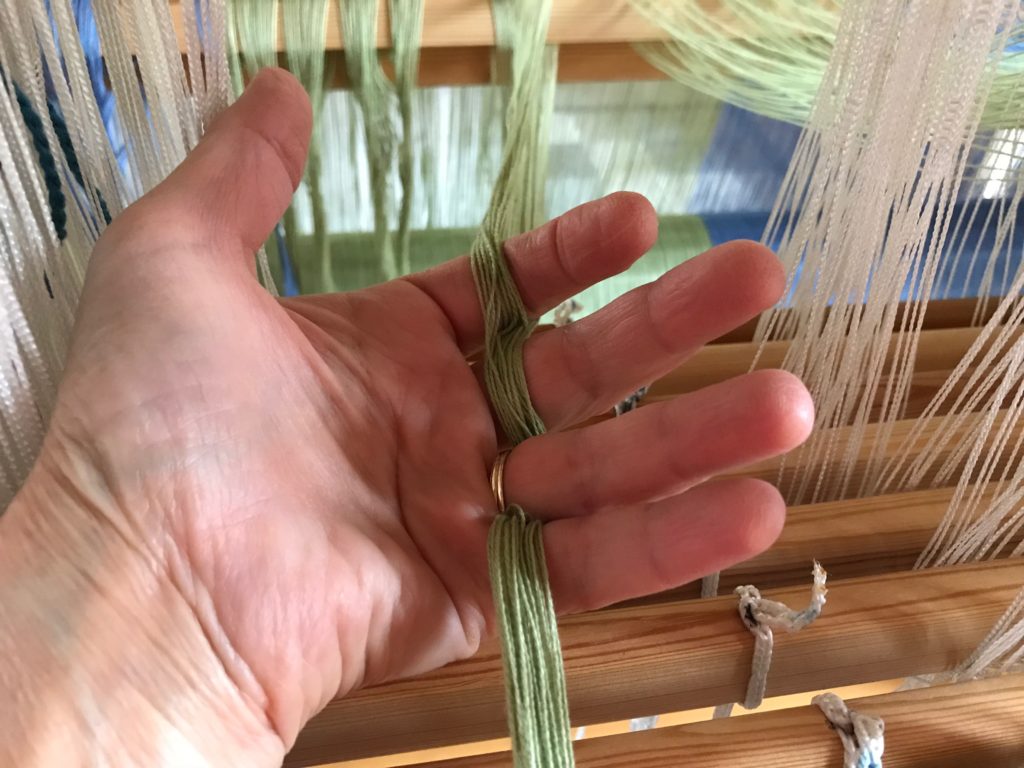
- Wrap left hand index finger around the group of heddles on shaft one (the shaft nearest the back of the loom), the middle finger around heddles on shaft two, the ring finger around heddles on shaft three, the pinky around heddles on shaft four, and bring the thumb around to hold it all loosely together.
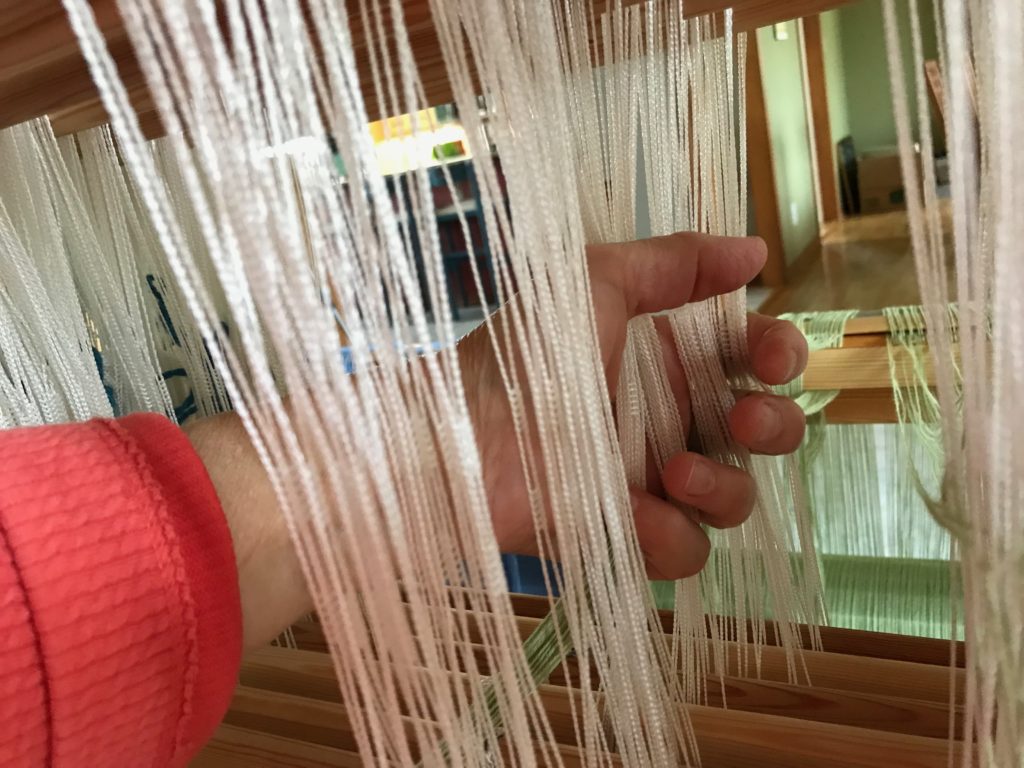
- Thread the first four heddles—1, 2, 3, 4.
- With the right hand, hold the group of warp ends taut, and open the fingers of the left hand to release the heddles.
- Keeping the group of warp ends loosely laced around the fingers, slide the left hand toward you to thread the next four heddles—5, 6, 7, 8. Position your fingers around the heddles on each shaft, as you did for the first four shafts.
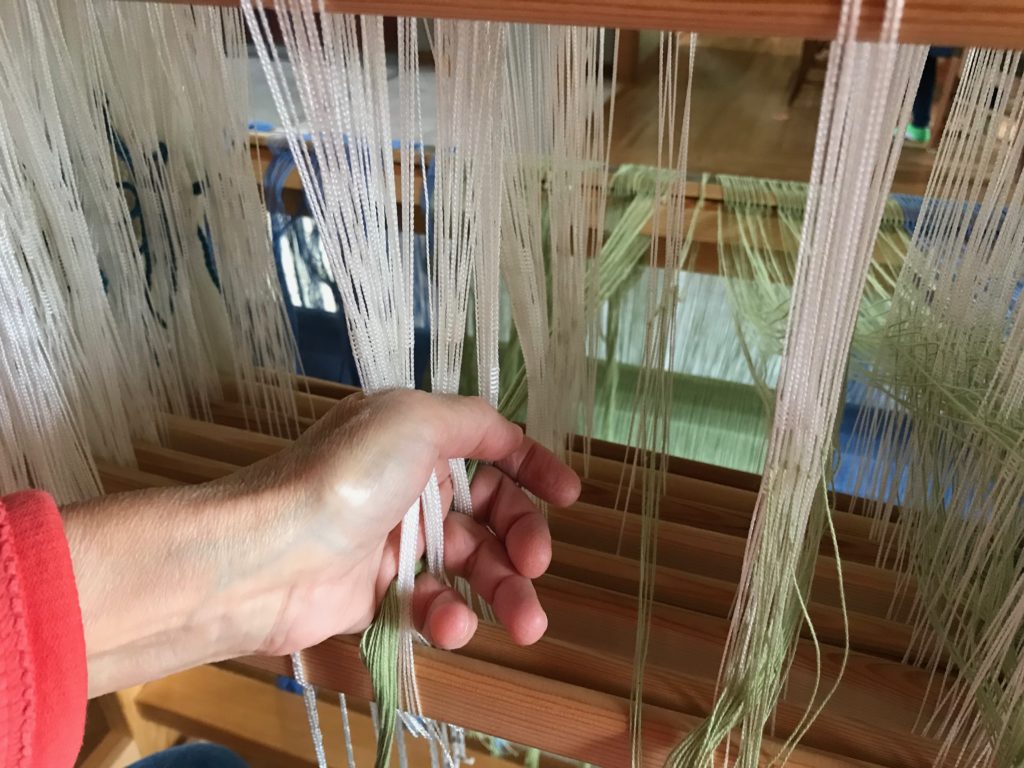
- After threading the second set of heddles, follow the same procedure as before and slide the left hand back again to thread 1, 2, 3, 4.
- Continue sliding the left hand forward and back, until the threading is completed for that group of ends.
- Check the threading group for accuracy, and then tie the group of ends together in a loose slip knot.
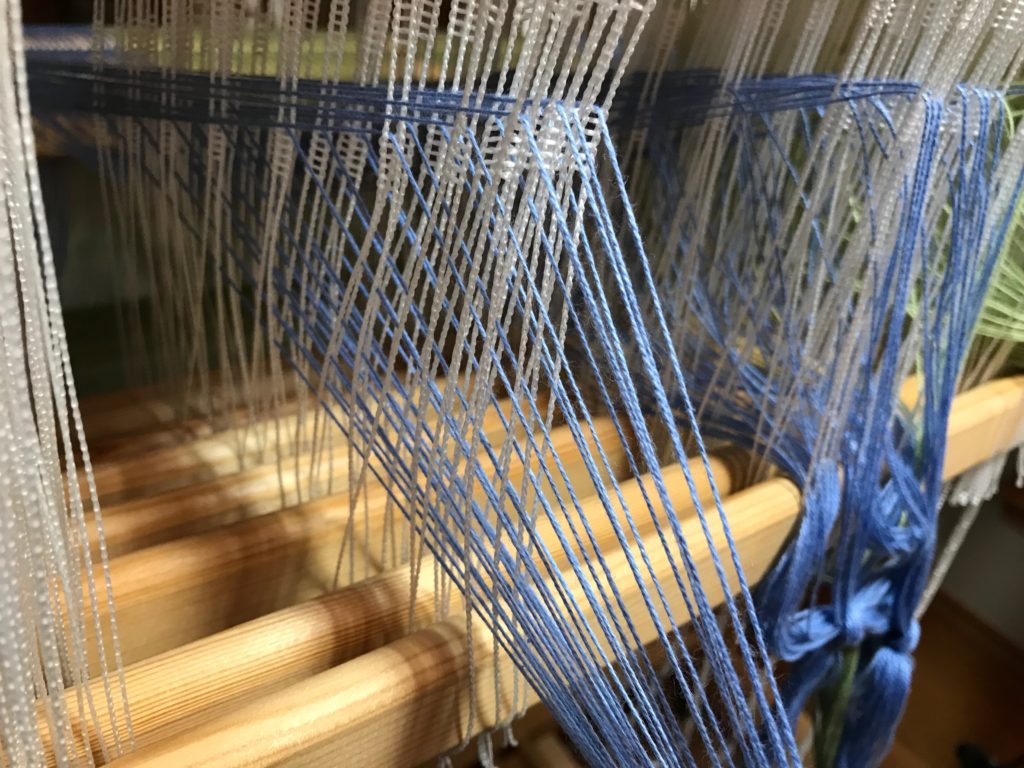
Complete the threading across the warp. And then, step back and admire the beauty of a beamed and threaded loom.
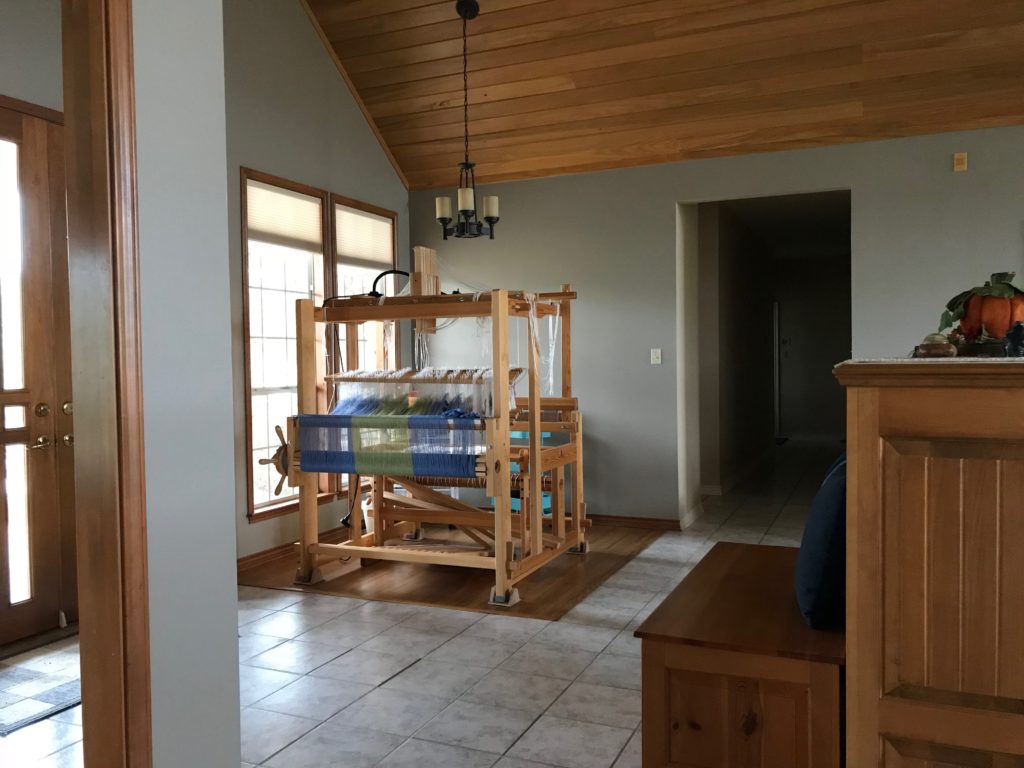
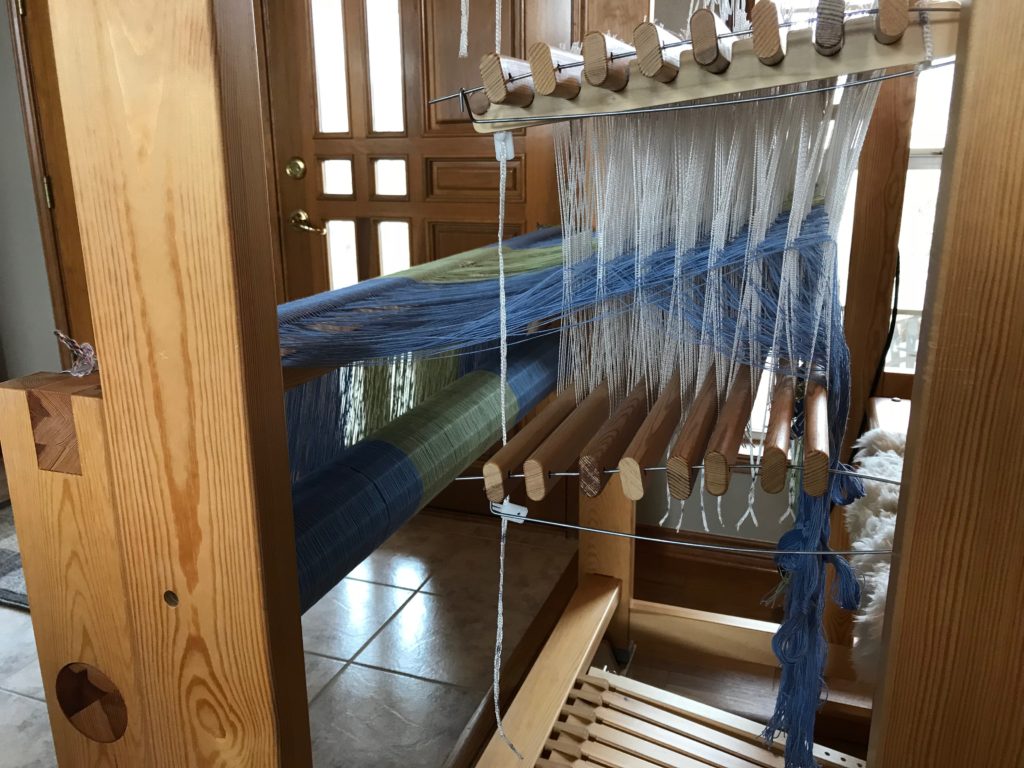
May you find efficient methods for the work of your hands.
Happy weaving,
Karen

